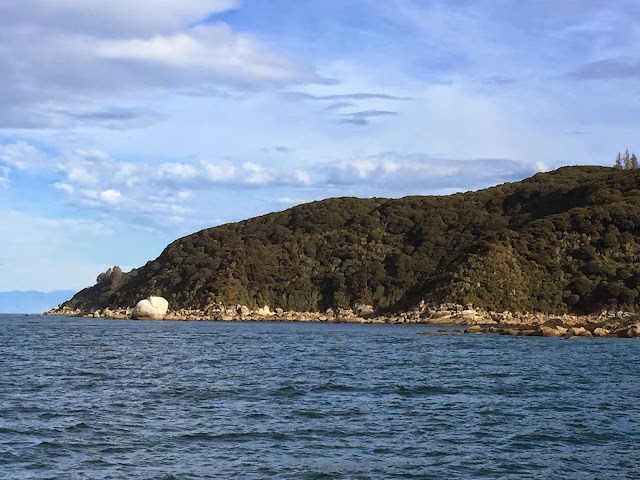Until recently I thought the Peripherique out of Paris was the road of no escape, but I've revised my opinion: getting out of Mytilene, the capital of the Greek island of Lesvos would try a saint's patience. This is a very small but crowded town looping around a port, and everyone is out and about the day we attempt to navigate our way out. Every narrow street is a dead end or one way, generally the wrong way. I almost miss that bitch Marija - the GPS we had in Croatia - but even though I navigate us into a dead end car park, I've done a better job than she would have!
Once we'd managed to get the hell out of town - incidentally everyone else we spoke to had the same problem - it was only 40kms to Plomari, our destination on the south coast. Forty kms of a long and winding road that traverses several mini mountains.
 |
| Plomari on the south coast of Lesvos |
We were here in early June for a friend's 60th birthday celebrations which she wanted to have in Plomari, her grandmother's birthplace. Over the week we enjoyed gatherings and parties which involved lots of food, lots of ouzo, a seemingly unending number of local relatives (none of whom my friend had met before) and some energetic Greek dancing - oompah! However no plate smashing - the fun police have outlawed it.
 |
| Crystal clear water and a pebbly beaches |
Lesvos is the island Greeks go to holiday - it is no Mykonos or Santorini, with their picture postcard whitewashed houses and churches, long sandy beaches and thigh to thigh bronzed German tourists in too small swimsuits. The island is rocky, steep and covered with thousands of ancient gnarled olive trees, and beaches are pebbly rather than sandy. It has a certain rustic charm.
 |
| Molyvos, clinging to the north coast |
One day we drove north over more mountains to Molyvos, a beautiful little town perched on the coast. Here, just 10 kilometres of ocean separate Lesvos from Turkey.
 |
| octopus - the true meaning of hung out to dry |
After yet another delicious lunch of crispy little fried fish and squid we took some of the the roads less travelled along the coast.
As long as you don't mind slamming on the brakes to avoid a head-on with a beat up local car hurtling at you, this is picturesque countryside. In the narrow village streets a good natured (mostly) battle of wills determines who backs up.
 |
| these little fried sardines became an obsession for the h-g |
In the sweltering early afternoon sun a large group of people were slogging their way uphill. They appeared to be Muslim (women in headscarves) and we wondered where they were going. When we got to the beach we found the remains of a couple of inflatable dinghies and lifejackets on the beach. The coast of Turkey is clearly visible and it doesn't take a rocket scientist to work out these are refugees/ illegal immigrants (see linked news item from April 2015).
On our drive back we passed the same group. They made it the 3.5 kilometres to the top of the hill and were heading towards Mytilene. Then we passed another group, and another, and another, carrying packs or bundles; family groups or groups of young men, sometimes taking a break from walking by sitting in the shade on the side of the road. We must've passed more than 100 people - and that was just one day. Many looked too Arabic to be Turkish and we assume they're Syrians who have fled to Turkey then onwards.
If you haven't already gathered, Lesvos is a quiet island. In the early 1900s it had a thriving soap industry, and continues to produce olive oil and lots of Ouzo. Of course we had to visit a factory and take a tour of the museum and the production plant and do a tasting. Making ouzo is a basic distilling process and just uses locally grown aniseed, alcohol and water.
We learned quite a lot about Ouzo but the only thing I remember - possibly as the result of an over enthusiastic tasting - is that you mustn't add ice, just a dash of cold water to bring out the aroma and flavour (like a good Malt Whiskey)
 |
| the original stills in the museum, over 100 years old |
 |
| modern stills in use |
As we were famously travelling with just carry-on bags we couldn't pack any to bring back. Ever resourceful, the h-g convinced the distiller to siphon 100mls of the highest quality Ouzo from one of the vats into a small bottle. Take that airport security!























